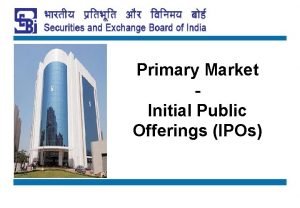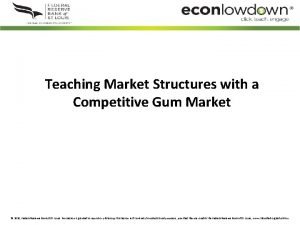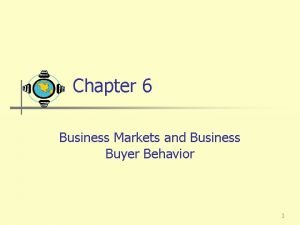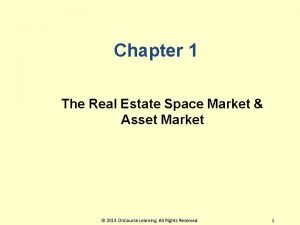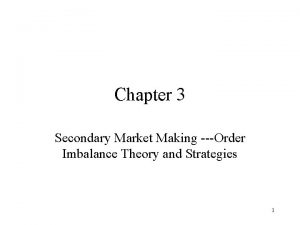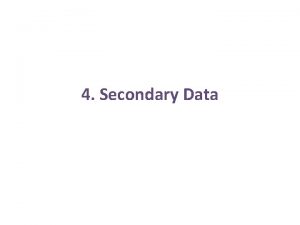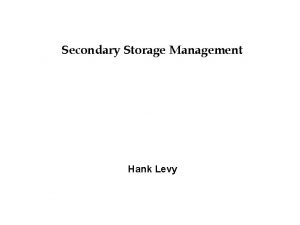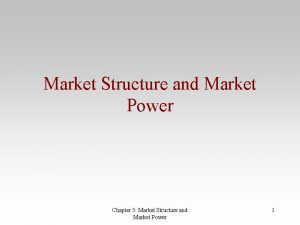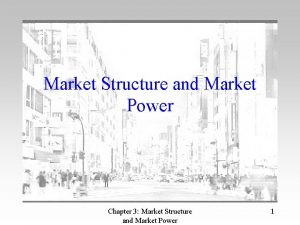Chapter 5 Secondary Market Making 1 A Secondary









- Slides: 9

Chapter 5 Secondary Market Making 1

A. Secondary Market Making – Dealer/Broker Activity Give financial claims greater liquidity 1. v v v Investors Issuers Investment Bankers Stock return, Liquidity and Order imbalance 2. v Order imbalance theory v v v Buyer-initiated order Seller-initiated order Information asymmetry in return-volume relation v v Speculative trade Hedge trade Dealing vs. Brokering 3. v v Bid-ask spread commission 2

B. Dealers Instruments 1. v v v Traders in dealer markets – swaps, mortgage-backed products, etc. Traders in exchanges – futures Traders in dealer markets and exchange markets Functions 2. v v Provide a quote Size a quote Reasons to participate 3. v Take profit – bid-ask spread Price vs. Inventory Market Microstructure v Develop and maintain good pricing skills Secondary market making supports primary market making 3

Managing dealers risks 4. § Identify the risks v v v v § Quantify the risks v v § 5. Systematic risk Unsystematic risk Interest rate risk Credit risk Call risk Prepayment risk Purchasing power risk Tax rate risk Natural hedge Value at Risk (Va. R) Managing the risks v Short or long position v Building blocks Inventory financing v Repo market 4

C. Brokers 1. Functions v Fill orders market order vs. limit order v Floor trading order book 5

v Other services v Monitor margin accounts v v v Offer investment management service v v Process dividends and interest coupon Assist in structuring portfolios v v v Initial margin vs. maintenance margin Margin call Real estate Stock and bonds Mutual funds Life insurance policy Retirement account Provide research and recommendation 6

2. Possible abuses v Bucket shops Securities firms that take customer orders but do not immediately execute them. v Boiler rooms Firms that use high-pressure sales tactics to sell securities. v Churning Excessive trading of a customer’s account to earn commission, especially in discretionary trading account. v Front running Trading ahead of a customer v Poor fills Hold and signal market orders 7

D. Speculators Speculation and manipulation 1. v v Speculation:to take a position in anticipation of a change in price level. Manipulation:to use personal power to affect prices to produce personal gains. Speculative methods 2. v v Fundamental analysis Technical analysis Trading methods 3. v v Absolute value trading Relative value trading Rating forecasting Complex forecasts 8

E. Arbitrager Arbitrage is defined as the simultaneous taking of positions in two or more markets in order to exploit pricing aberrations among them. Spatial arbitrage 1. v v v Geographic arbitrage Temporal arbitrage:program trading cash price vs. forward price Temporal arbitrage:the cash-and-carry synthetic A cash-and-carry transaction involves the purchase of an instrument and the simultaneous sale of a future contract in order to create a synthetic short-term instrument and to earn low-risk short-term rates. 9
 Hypothetical market structure
Hypothetical market structure Marketing targeting and positioning
Marketing targeting and positioning Primary target market and secondary target market
Primary target market and secondary target market Document sample
Document sample Making inferences
Making inferences War making and state making as organized crime
War making and state making as organized crime Teaching market structures with a competitive gum market
Teaching market structures with a competitive gum market What are the 5 market forms of poultry?
What are the 5 market forms of poultry? 6 markets model
6 markets model Real estate asset market
Real estate asset market



